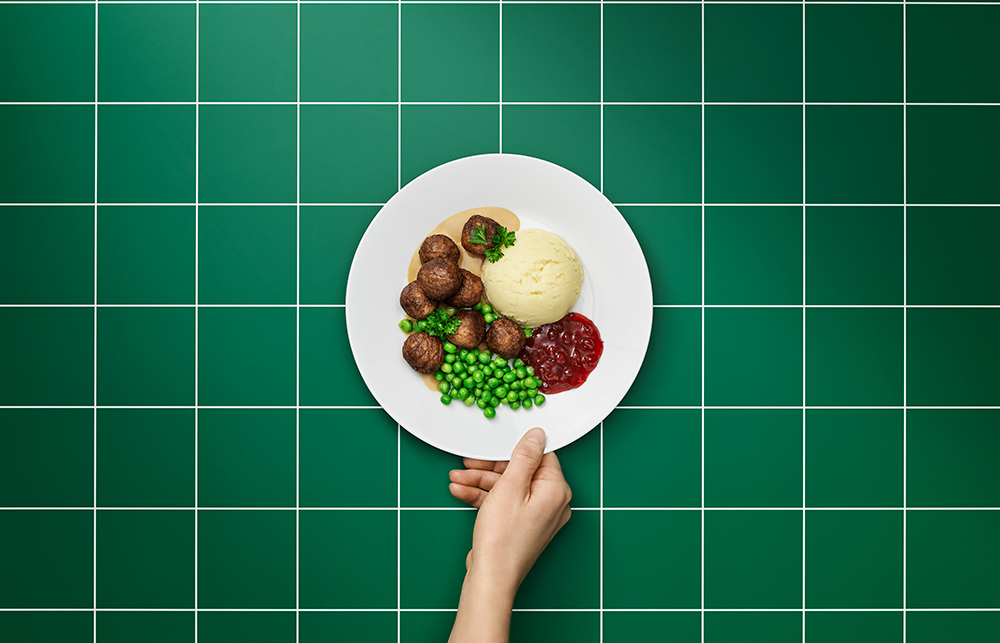宜家每年销售约10亿个经典肉丸。未来,这家瑞典家具巨头希望推出更多的植物肉丸。
该公司在本月早些时宣布,新推出的植物丸子将于8月登陆欧洲,9月底在美国出售。
目前的宜家菜单上有两个素食肉丸:一个是新的植物丸子,另一个是该公司在2015年推出的“素食丸子”。

宜家指出,这两种产品是不同的,原来的素食丸子在外观和味道上都有点像法拉费,可以看到玉米与胡椒粉,毫无疑问是蔬菜做的,它是为了让素食者有更多的选择。而新型植物丸子是由豌豆、燕麦、土豆、洋葱和苹果等制成的,其外观和味道都更像肉丸。
宜家的食品供应经理克里斯塔•博伊尔说:“植物丸子真的是让我们朝着爱吃肉的人迈出了一步,让人们更加了解自己习惯吃什么。”
宜家推出肉丸替代品的决定是过去几年植物产业发生变化的一个典型例子。为了增强素食的吸引力,公司试图尽可能地复制肉类,由此也出现了一批新兴的初创公司,如Beyond Meat和Impossible Foods。
正如《财富》杂志在2017年调研植物肉产业时所解释的,“这里的目标并不是创造你的素食博卡汉堡,而是让一位资深食肉者不会羞于将其带到附近的烧烤店。”
这项战略的底层逻辑是:要想有效减少温室气体的排放,企业必须吸引更多的素食人群。
宜家表示,这种植物肉丸的气候足迹仅为传统肉丸的4%。博伊尔称,该公司的目标是到2022年,其食品销售额的20%都来自植物性食品,“可持续发展是我们的首要任务。”
该公司决定允许其植物丸子与瑞典肉丸竞争,瑞典肉丸已经成为宜家的经典食品。此外,宜家还有其他三条产品线:Lack咖啡桌、Klippan沙发和毕利书柜。
宜家在20世纪50年代开始供应食品,当时宜家的创始人英格瓦•坎普拉德意识到与空腹的人做生意很困难。2015年,时任美国宜家食品负责人的格尔德•迪瓦尔德在接受《财富》杂志采访时说:“肉丸是宜家出售沙发的最佳营销方式,因为它能让人们保持积极快乐。”(财富中文网)
编译:于佳鑫
宜家每年销售约10亿个经典肉丸。未来,这家瑞典家具巨头希望推出更多的植物肉丸。
该公司在本月早些时宣布,新推出的植物丸子将于8月登陆欧洲,9月底在美国出售。
目前的宜家菜单上有两个素食肉丸:一个是新的植物丸子,另一个是该公司在2015年推出的“素食丸子”。
宜家指出,这两种产品是不同的,原来的素食丸子在外观和味道上都有点像法拉费,可以看到玉米与胡椒粉,毫无疑问是蔬菜做的,它是为了让素食者有更多的选择。而新型植物丸子是由豌豆、燕麦、土豆、洋葱和苹果等制成的,其外观和味道都更像肉丸。
宜家的食品供应经理克里斯塔•博伊尔说:“植物丸子真的是让我们朝着爱吃肉的人迈出了一步,让人们更加了解自己习惯吃什么。”
宜家推出肉丸替代品的决定是过去几年植物产业发生变化的一个典型例子。为了增强素食的吸引力,公司试图尽可能地复制肉类,由此也出现了一批新兴的初创公司,如Beyond Meat和Impossible Foods。
正如《财富》杂志在2017年调研植物肉产业时所解释的,“这里的目标并不是创造你的素食博卡汉堡,而是让一位资深食肉者不会羞于将其带到附近的烧烤店。”
这项战略的底层逻辑是:要想有效减少温室气体的排放,企业必须吸引更多的素食人群。
宜家表示,这种植物肉丸的气候足迹仅为传统肉丸的4%。博伊尔称,该公司的目标是到2022年,其食品销售额的20%都来自植物性食品,“可持续发展是我们的首要任务。”
该公司决定允许其植物丸子与瑞典肉丸竞争,瑞典肉丸已经成为宜家的经典食品。此外,宜家还有其他三条产品线:Lack咖啡桌、Klippan沙发和毕利书柜。
宜家在20世纪50年代开始供应食品,当时宜家的创始人英格瓦•坎普拉德意识到与空腹的人做生意很困难。2015年,时任美国宜家食品负责人的格尔德•迪瓦尔德在接受《财富》杂志采访时说:“肉丸是宜家出售沙发的最佳营销方式,因为它能让人们保持积极快乐。”(财富中文网)
编译:于佳鑫
Ikea sells some 1 billion of its iconic meatballs every year. But going forward, the Swedish furniture giant wants more of them to be made of plants.
The company announced earlier this month that it would roll out its “plant ball” in Europe in August and in the U.S. at the end of September.
Ikea will now have two vegan meatballs on the menu: the new plant ball, and a “veggie ball” that the company launched in 2015.
Lest you think Ikea is overdoing it with the plants, the company insists that the two products serve different purposes. The veggie ball—somewhat reminiscent of a falafel in both look and taste—is meant to target and give more options to vegetarians. With bits of corn and pepper visible, there’s no question that it’s made of vegetables. However, the new plant ball—made of pea protein, oats, potatoes, onion, and apple—is instead designed to look and taste like meat.
“The plant ball is really to take us a step toward people who love meat, making it a little more recognizable to what they’re used to eating,” says Krista Boyer, Ikea food range and supply manager.
Ikea’s decision to roll out the new meatball alternative is a prime example of the broader movement that’s taken place within the plant-based industry over the past few years. To broaden the appeal of vegetarian and vegan products, companies are increasingly attempting to replicate meat as closely as possible—an approach that has led to a burgeoning group of startups like Beyond Meat and Impossible Foods.
As Fortune explained in a deep dive into the plant-based meat industry in 2017, “the goal here is not to create your vegan cousin’s Boca Burger of yore, but instead a veggie patty that a hard-core carnivore wouldn’t be ashamed to bring to a neighborhood barbecue.”
The logic behind the strategy is that to have any true impact on reducing greenhouse gas emissions, companies must appeal to more than the subset of the population that has chosen a vegetarian or vegan lifestyle.
Ikea says the climate footprint of its new plant ball is only 4% of its classic meatball. If it converts about 20% of its meatball sales to plant balls, the company calculates that it would reduce its climate footprint in the food business by 8%. Boyer says the company’s goal is to have 20% of its food sales come from plant-based products by its fiscal 2022. “Sustainability is a top priority for us,” she says, noting that the move is part of the company’s broader mission to become climate positive by 2030.
The significance of the company’s decision to allow its plant balls to cannibalize its iconic Swedish meatball should not be understated. The Swedish meatball has become core to Ikea’s identity. Only three other product lines have been part of Ikea for as long: the Lack coffee table, the Klippan sofa, and the Billy bookcase.
Ikea started serving food in the 1950s when founder Ingvar Kamprad realized it was difficult to sell furniture to hungry customers. In 2015, Gerd Diewald, then head of U.S. Ikea food, told Fortune, “The meatball is the best sofa seller for Ikea because it keeps people engaged and happy.”






